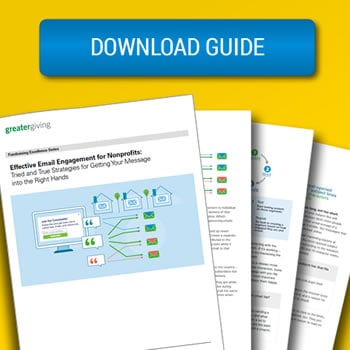
This post is the sixth in a series designed to teach the fundamentals of email marketing for nonprofits. These posts are based on the Effective Email Engagement for Nonprofits: The definitive guide to better nonprofit email marketing. Each post focuses on an element of conducting an email marketing campaign, from crafting the email to measuring recipient responses and adjusting your email approach accordingly.
The fundamental requirement of a hook is that it “grabs”—that is, your reader feels a need to find out what comes next.
How you write your hook is critical to its reception. A hook with great information in it can still be presented in an unexciting way if it isn’t written with precision.
WHAT TO AVOID:
- Lengthy wind-ups! Think about the last time someone started a story with, “Have you heard…” or “Let me tell you about…”? I’m already asleep. Jump right in with the hook!
- Over-the-top shock! Trust me, your readers will see right through it. Shock factor is good, but you shouldn’t have to manufacture anything to earn it. Your core mission is good enough.
- Boring words! Each word counts in that first sentence—it could be your recipient stops reading. Skip the fluff words that aren’t doing any work and focus on those that evoke an idea or image immediately.
- Make ‘em short! A great hook is easily digestible—that is, simple and to the point. Make your statement and get out! You can spend the rest of your email explaining what you mean.
- Lead into an action item. Your hook should present a problem you intend to start solving—and your reader’s donation or action will help. Shoot for realistic hooks, problems that can be tackled, over ones that are impossible or pie-in-the-sky.
- Use power words. A “power word” is simply a word that pushes the reader to take action. Often in email marketing, writers are encouraged to focus on the reader’s needs and wants—but as we’re talking about not-so-pretty problems we face in the nonprofit world, we can’t lean on words like “free!” or “guaranteed.”
We’re not giving away anything, or guaranteeing a product. We’re trying to present the mission and help achieve it.
- Choose straightforward words. “One in six Americans go hungry every night” is a lot more powerful than “one in six Americans has food insecurity.” Most people know what “hunger” is, but fewer will know what “food insecurity” means.
- Choose active words. “Samantha has her very first job interview, but owns nothing appropriate to wear,” versus, “Samantha scored a job interview, but can’t go dressed like this.” The word “scored” is a lot more active, and has personality; Samantha is probably excited for her interview, but as she’s homeless, she doesn’t have the kind of outfit usually needed.

